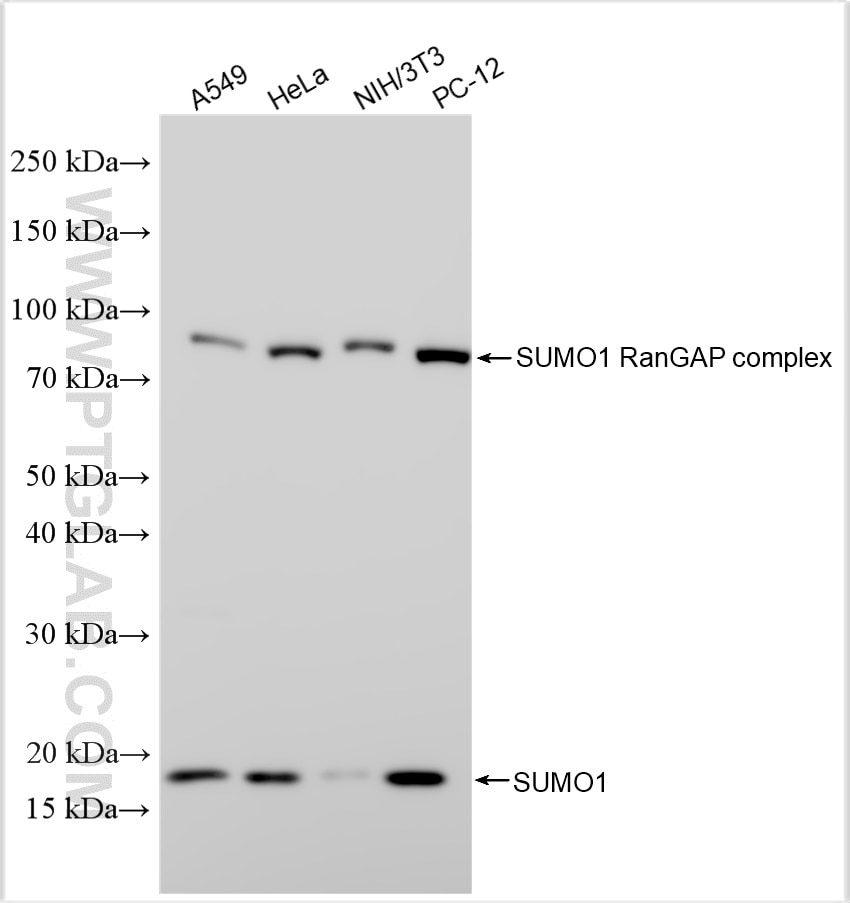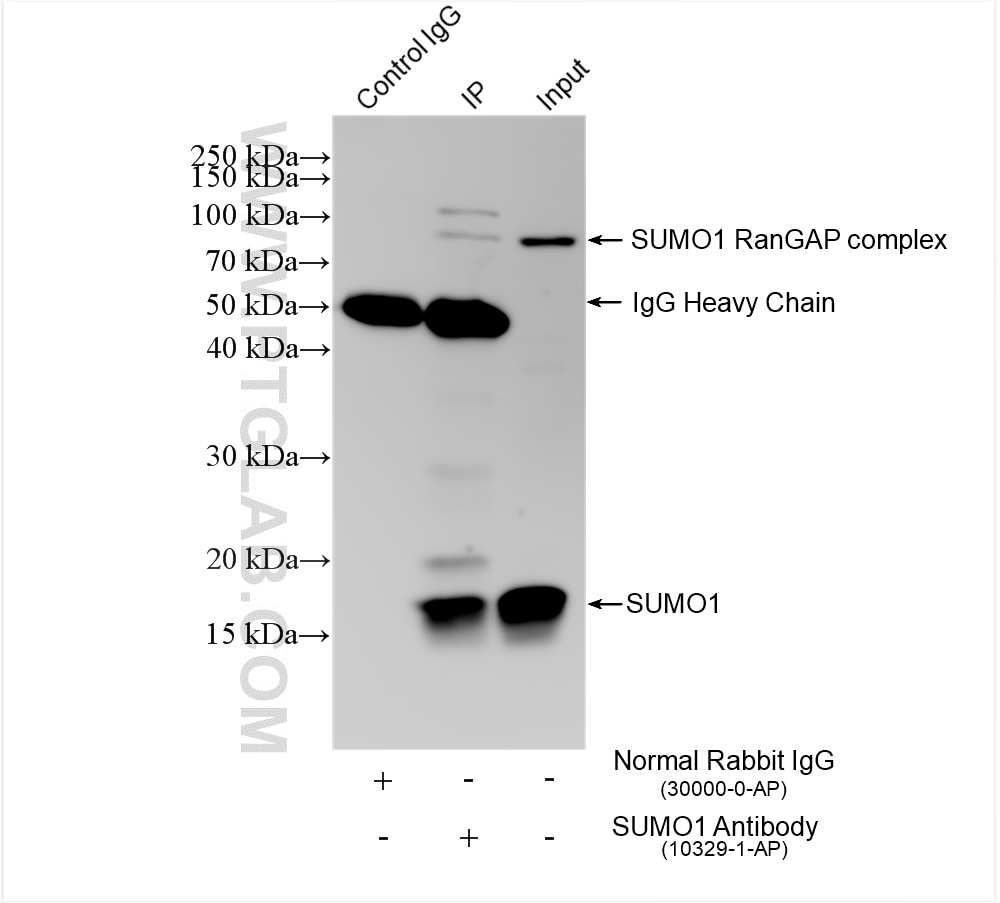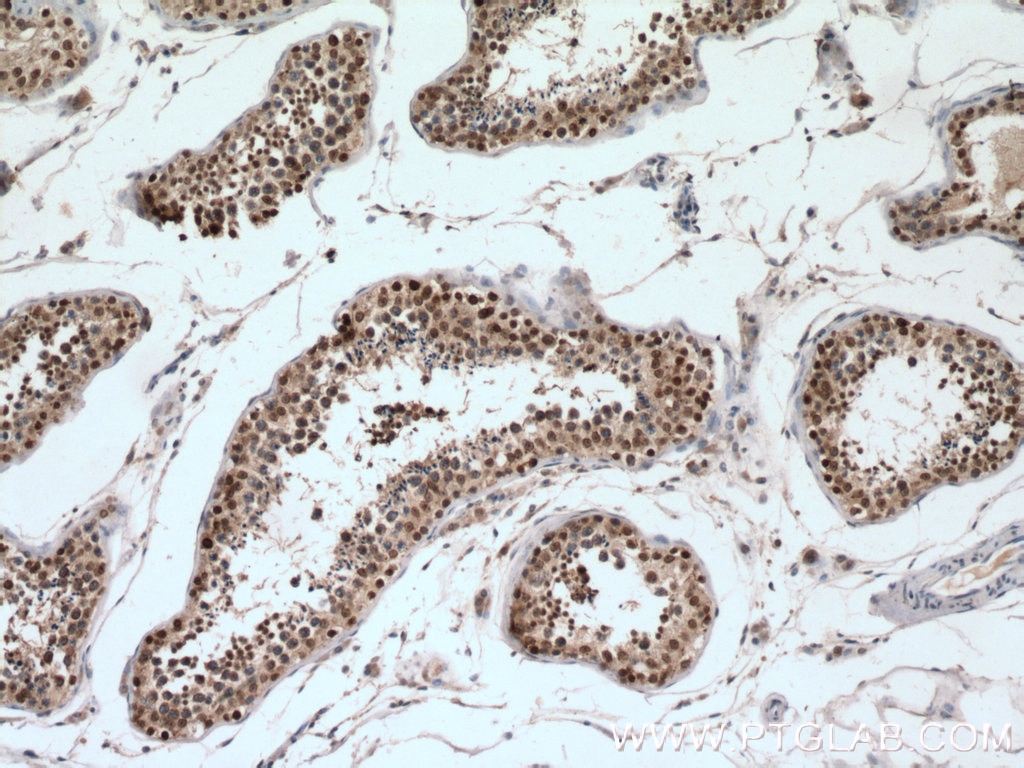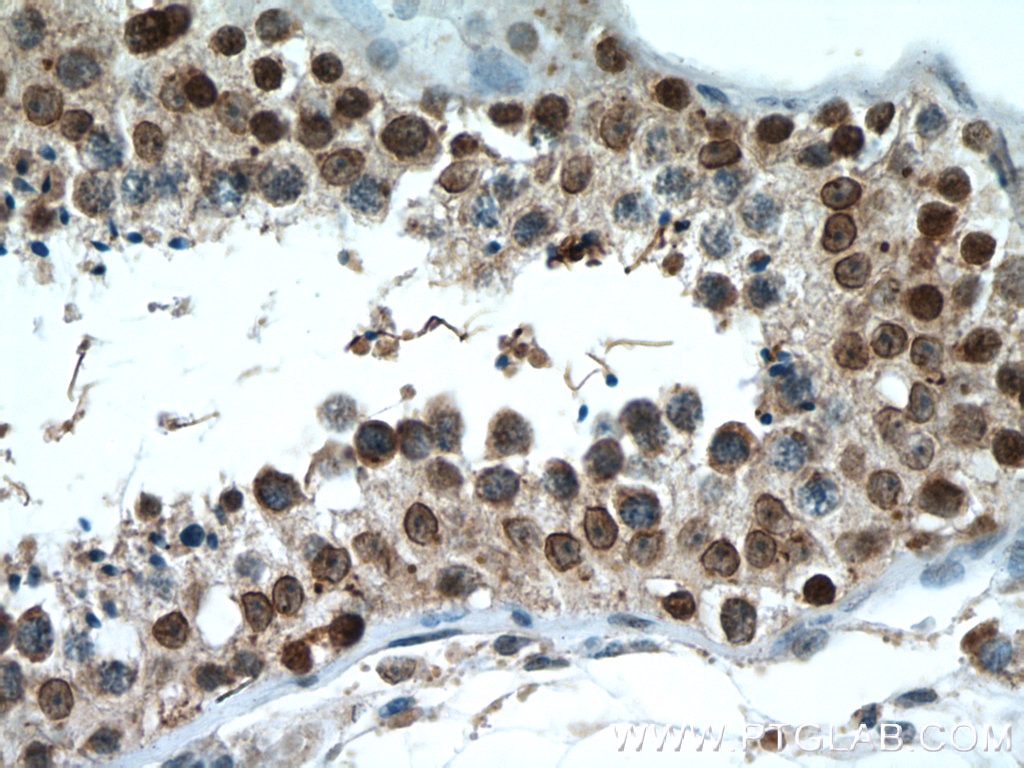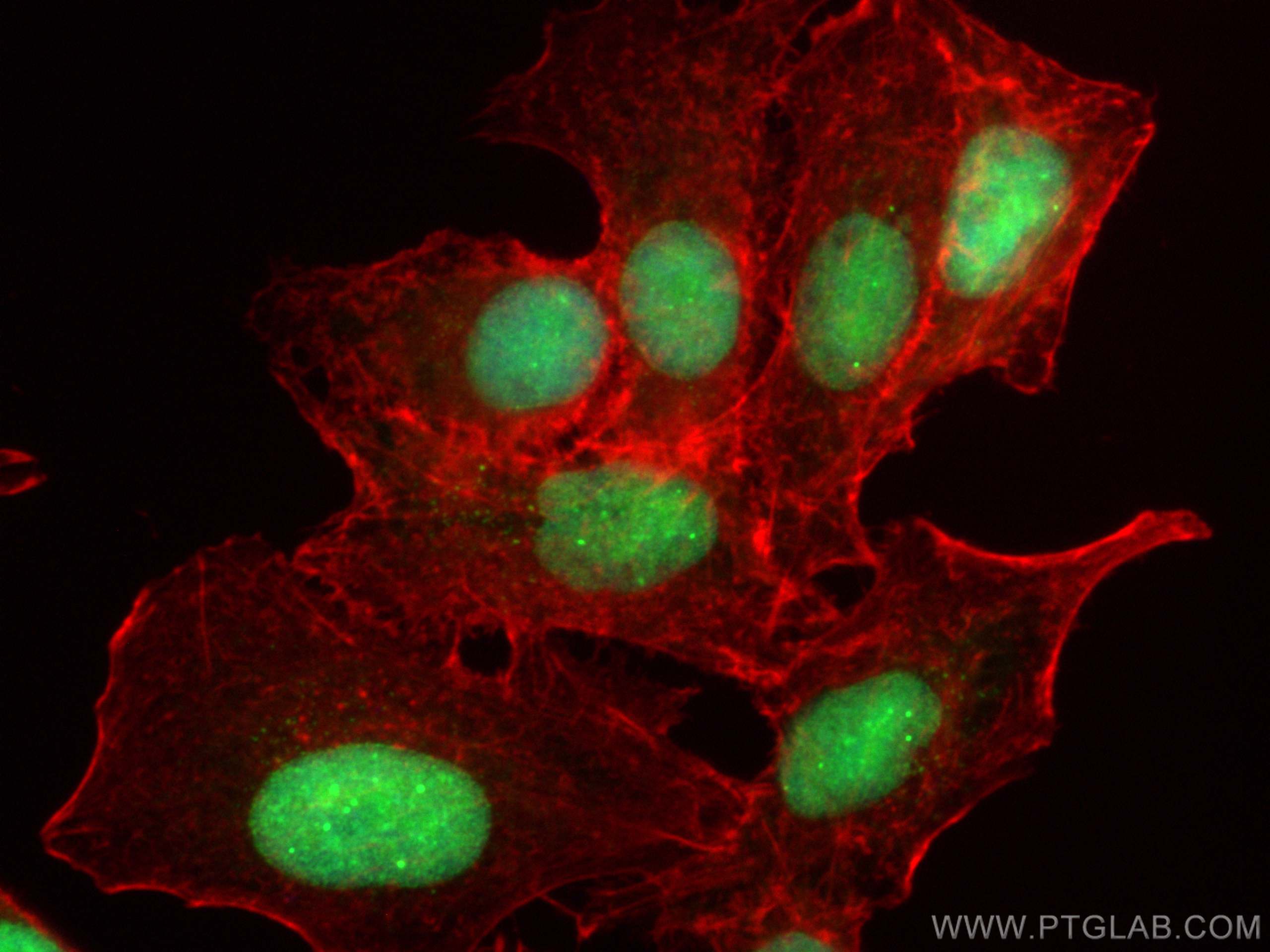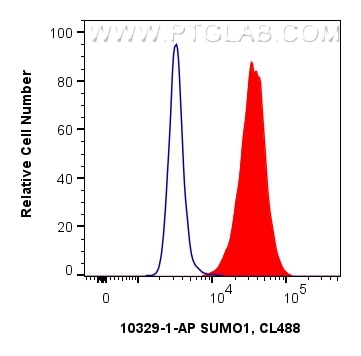Anticorps Polyclonal de lapin anti-SUMO1
SUMO1 Polyclonal Antibody for WB, IHC, IF/ICC, FC (Intra), IP, Indirect ELISA
Hôte / Isotype
Lapin / IgG
Réactivité testée
Humain, rat, souris
Applications
WB, IHC, IF/ICC, FC (Intra), IP, Indirect ELISA
Conjugaison
Non conjugué
N° de cat : 10329-1-PBS
Synonymes
Galerie de données de validation
Informations sur le produit
10329-1-PBS cible SUMO1 dans les applications de WB, IHC, IF/ICC, FC (Intra), IP, Indirect ELISA et montre une réactivité avec des échantillons Humain, rat, souris
| Réactivité | Humain, rat, souris |
| Hôte / Isotype | Lapin / IgG |
| Clonalité | Polyclonal |
| Type | Anticorps |
| Immunogène | SUMO1 Protéine recombinante Ag0414 |
| Nom complet | SMT3 suppressor of mif two 3 homolog 1 (S. cerevisiae) |
| Masse moléculaire calculée | 12 kDa |
| Poids moléculaire observé | 12~18 kDa, 80-90 kDa |
| Numéro d’acquisition GenBank | BC006462 |
| Symbole du gène | SUMO1 |
| Identification du gène (NCBI) | 7341 |
| Conjugaison | Non conjugué |
| Forme | Liquide |
| Méthode de purification | Purification par affinité contre l'antigène |
| Tampon de stockage | PBS only |
| Conditions de stockage | Store at -80°C. 20ul contiennent 0,1% de BSA. |
Informations générales
Small ubiquitin-related modifier 1 (SUMO1) belongs to the ubiquitin family and the SUMO subfamily as it contains 1 ubiquitin-like domain and is also 18% identical to ubiquitin (PMID: 9654451).
1. What is the molecular weight of SUMO1?
The molecular weight of SUMO1 is 12 kDa.
2. What is the cellular localization of SUMO1?
SUMO1 is located in the nuclear membrane and is recruited by BCL11A to the nuclear body (PMID: 18681895).
3. What modifications is SUMO1 subjected to?
SUMO1 function occurs after the cleavage of its precursor form by SENP1 or SENP2 (PMID: 27576863). Polymeric SUMO1 chains also undergo polyubiquitination by RNF4 (PMID: 18408734).
4. What is the function of SUMO1?
SUMO1 post-translationally modifies many proteins that have roles in an array of processes including transcriptional regulation, chromatin structure, and DNA repair. SUMO1 can covalently attach itself to protein as a monomer or a lysine-linked polymer via an isopeptide bond (PMID:11124955). This SUMO modification can regulate the localization and activity of the affected proteins.
5. What is SUMO1's involvement in disease?
Defects in SUMO1 as a result of a chromosomal translocation are associated with non-syndromic orofacial cleft type 10, or non-syndromic cleft lip, and are associated with cleft palate in two-thirds of cases (PMID: 18983974).
